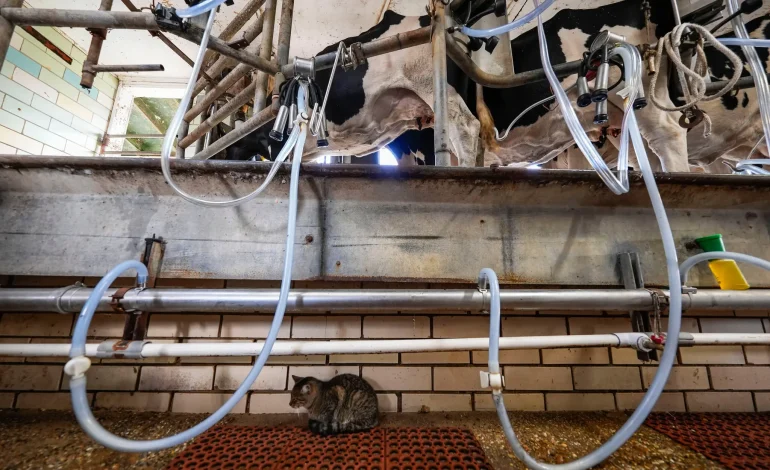A recent study published by the Centers for Disease Control and Prevention (CDC) raises concerns about the potential transmission of bird flu (H5N1) from dairy workers to their pet cats in Michigan.
The study, which was delayed due to pauses in public communications by the agency, highlights cases where indoor cats, owned by dairy workers, developed severe illness and tested positive for bird flu. However, the findings leave key questions unanswered, particularly regarding how the cats became infected and whether the virus was passed from humans to cats or vice versa.
The incidents occurred last May, when two households in Michigan, both with dairy workers, reported that their pet cats had developed symptoms consistent with bird flu, including respiratory and neurological issues. One cat in each household died after displaying these symptoms, prompting health officials to investigate the potential link between the farmworkers’ exposure to bird flu and the cats’ illness.
Both farmworkers had close contact with unpasteurized milk and experienced health issues themselves, which may have contributed to the spread of the virus. In one case, the worker was exposed to milk splashes in the face and eyes without personal protective equipment (PPE), while the other worker reported symptoms like vomiting and diarrhea. The study suggests that the workers may have transmitted the virus to their cats, but it is still unclear whether the transmission occurred directly from the workers or through other sources, such as contaminated milk or dead animals at the farm.
While the findings are concerning, the study also points out the need for further investigation into the role of cats as potential vectors for the disease. Experts note that, although rare, bird flu transmission between humans and cats has occurred in other instances, such as a 2016 case where a cat in a New York City shelter infected a person. However, the possibility of transmission within households has not been extensively studied, and more research is needed to understand the dynamics of such cases.
The CDC study also highlights the need for improved protocols, including better testing and protective measures for workers in high-risk environments like dairy farms. Experts emphasize the importance of encouraging farmworkers to seek testing without fear of personal or financial consequences.
With input from the New York Times and USA Today.









The latest news in your social feeds
Subscribe to our social media platforms to stay tuned